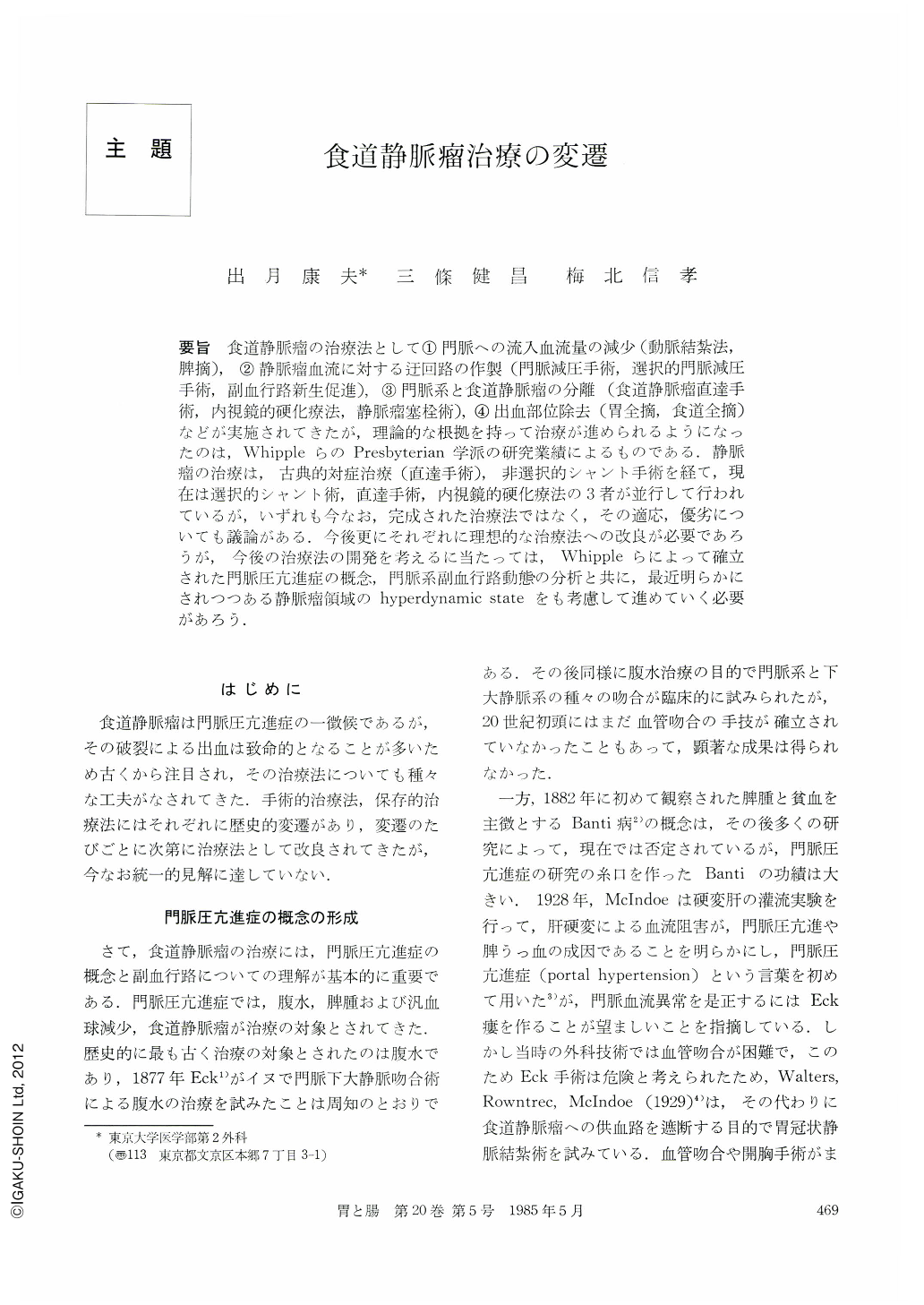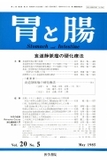Japanese
English
- 有料閲覧
- Abstract 文献概要
- 1ページ目 Look Inside
要旨 食道静脈瘤の治療法として①門脈への流入血流量の減少(動脈結紮法,脾摘),②静脈瘤血流に対する迂回路の作製(門脈減圧手術,選択的門脈減圧手術,副血行路新生促進),③門脈系と食道静脈瘤の分離(食道静脈瘤直達手術,内視鏡的硬化療法,静脈瘤塞栓術),④出血部位除去(胃全摘,食道全摘)などが実施されてきたが,理論的な根拠を持って治療が進められるようになったのは,WhippleらのPresbyterian学派の研究業績によるものである.静脈瘤の治療は,古典的対症治療(直達手術),非選択的シャント手術を経て,現在は選択的シャント術,直達手術,内視鏡的硬化療法の3者が並行して行われているが,いずれも今なお,完成された治療法ではなく,その適応,優劣についても議論がある.今後更にそれぞれに理想的な治療法への改良が必要であろうが,今後の治療法の開発を考えるに当たっては,Whippleらによって確立された門脈圧亢進症の概念,門脈系副血行路動態の分析と共に,最近明らかにされつつある静脈瘤領域のhyperdynamic stateをも考慮して進めていく必要があろう.
The following therapeutic methods have been tried for esophageal varices: (1) to reduce blood flow of the portal system (ligation of artery, splenectomy), (2) to establish bypass for variceal blood flow (non-selective decompression of portal hypertension, selective decompression of portal hypertension, regeneration of collateral veins), (3) disconnection of the esophageal varices from portal system (esophageal transection, endoscopic sclerotherapy, venous embolization) and (4) removal of bleeding sources (total gastrectomy, total esophagectomy).
The trends of treatment for the esophageal varices have changed from the classical allopathic treatment and non-selective shunt operations, to the selective shunt operations, esophageal transection and endoscopic sclerotherapy during the last two decades. However, indications of these methods as well as their superiority or inferiority over the others are still controversial.
Therefore, further investigations and experiences seem mandatory to develop better therapy. Here, it seems necessary to consider hyperdynamic state of variceal region, together with the concept of portal hypertension and analysis of collateral hemodynamics of the portal system.

Copyright © 1985, Igaku-Shoin Ltd. All rights reserved.


